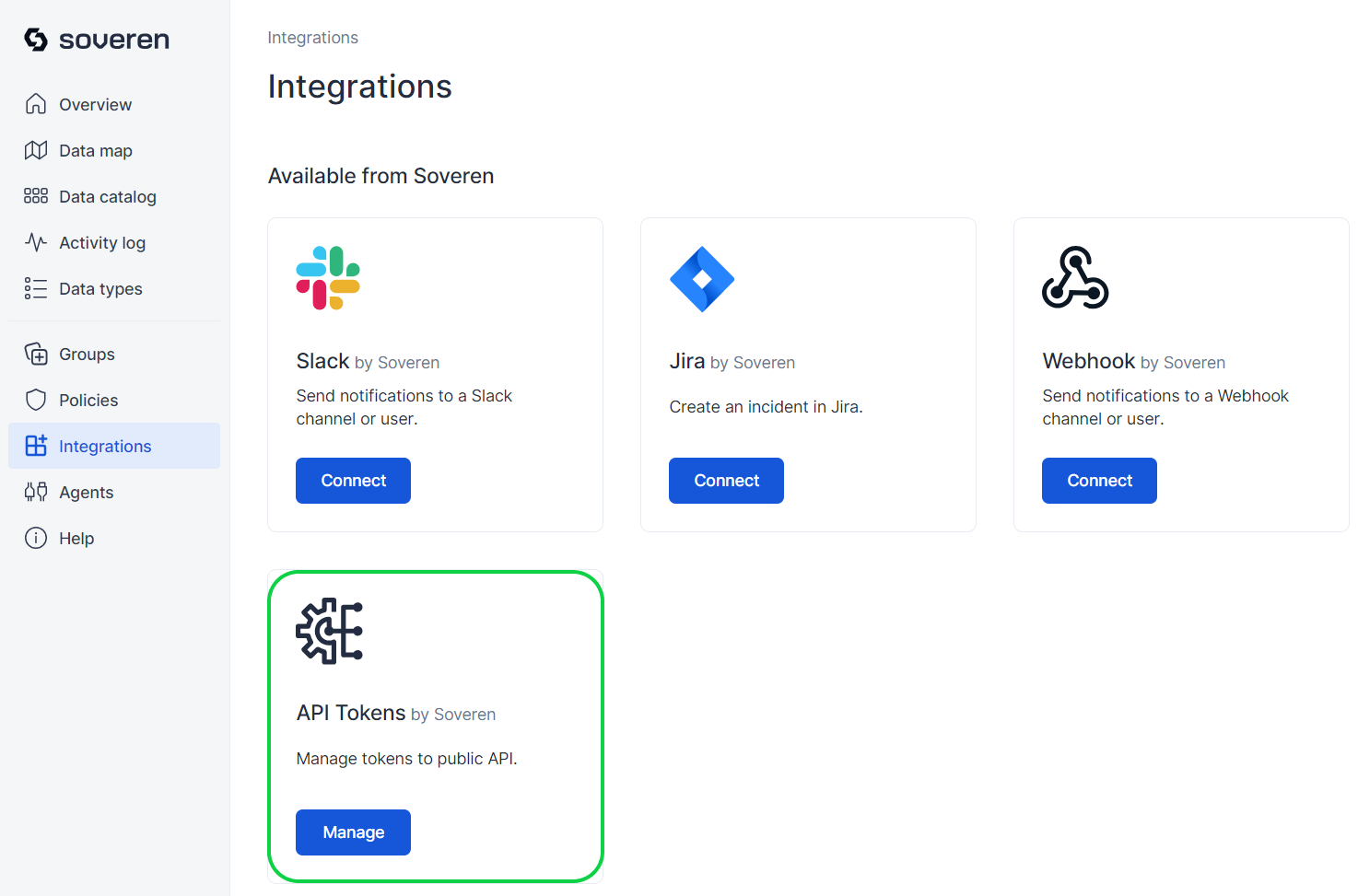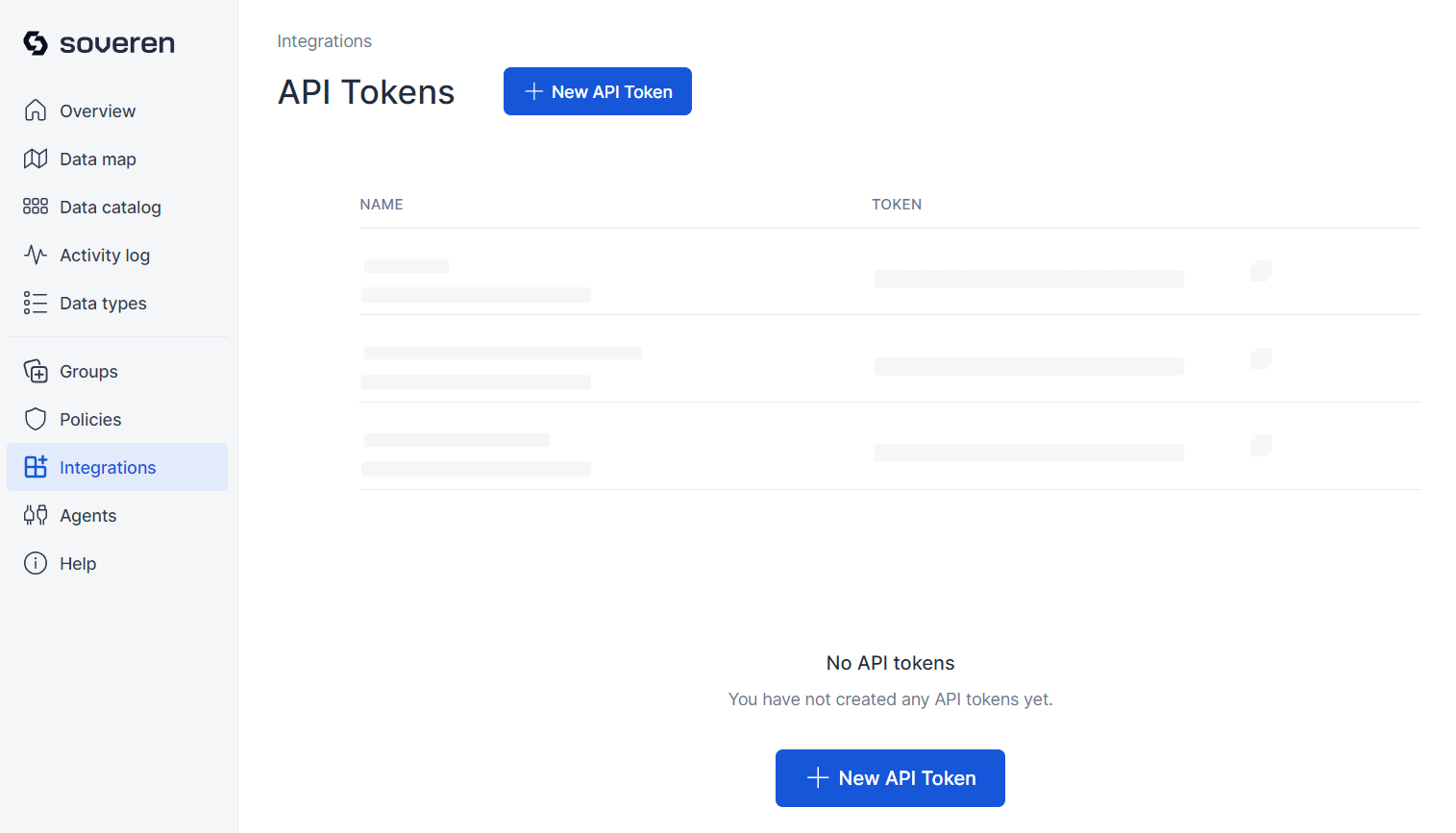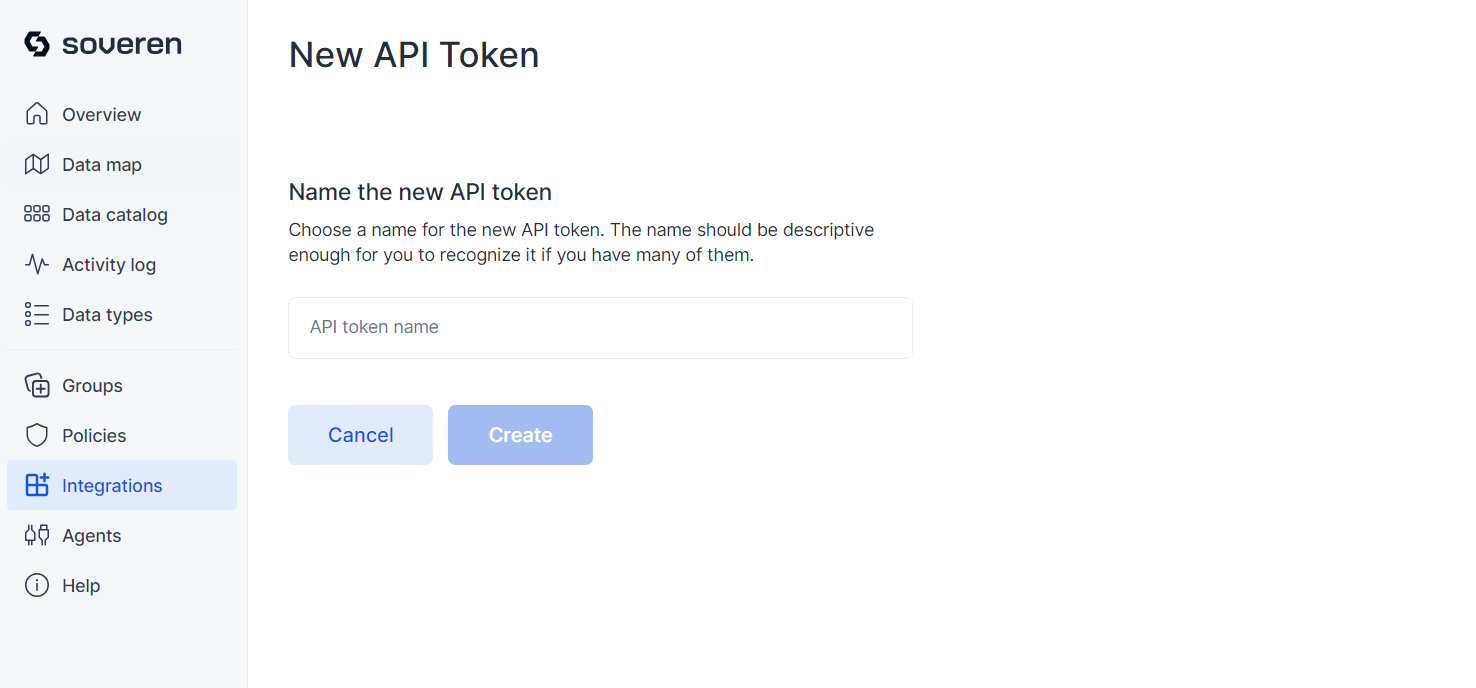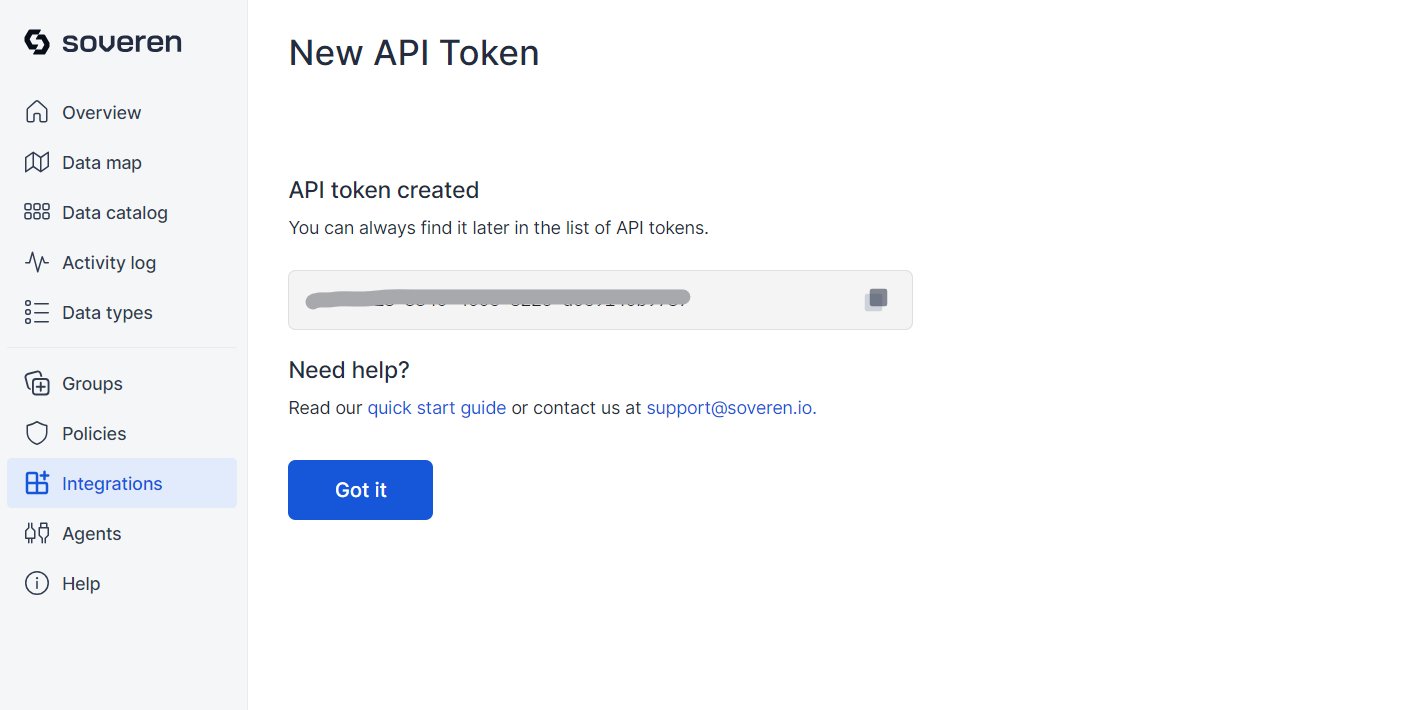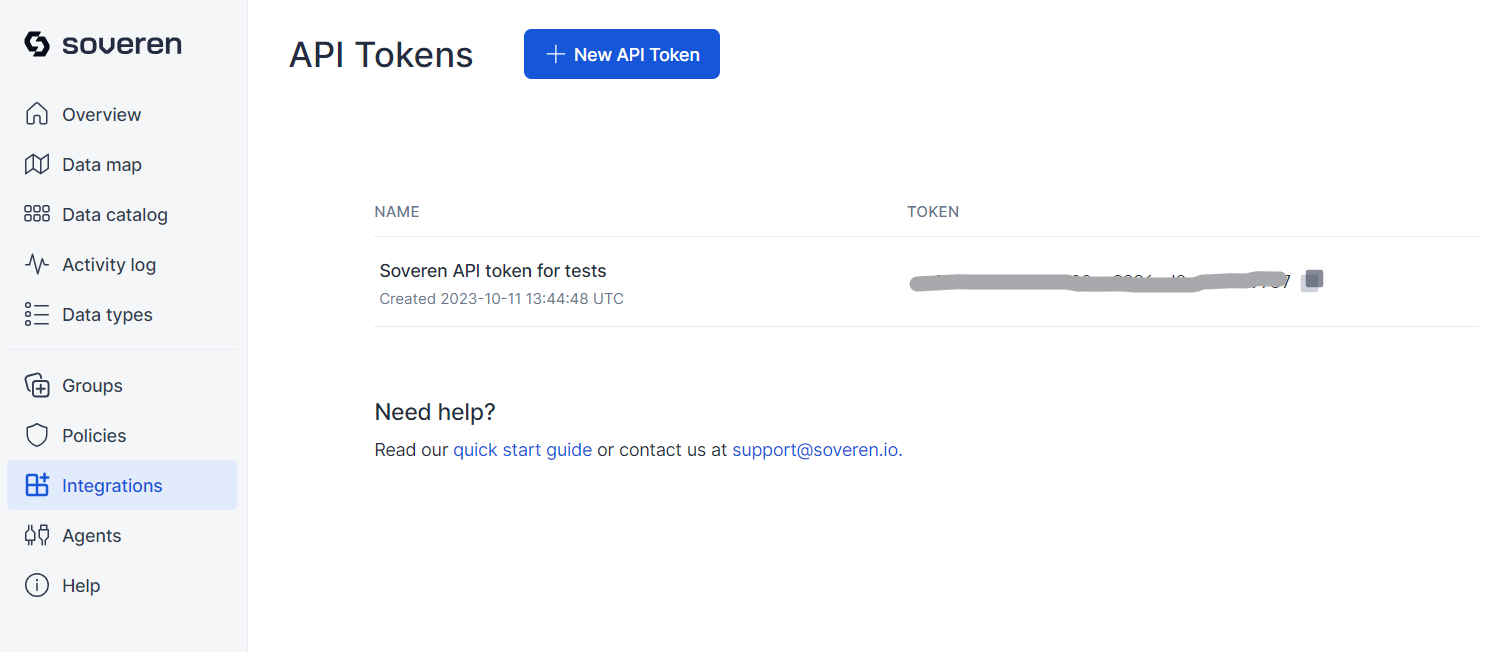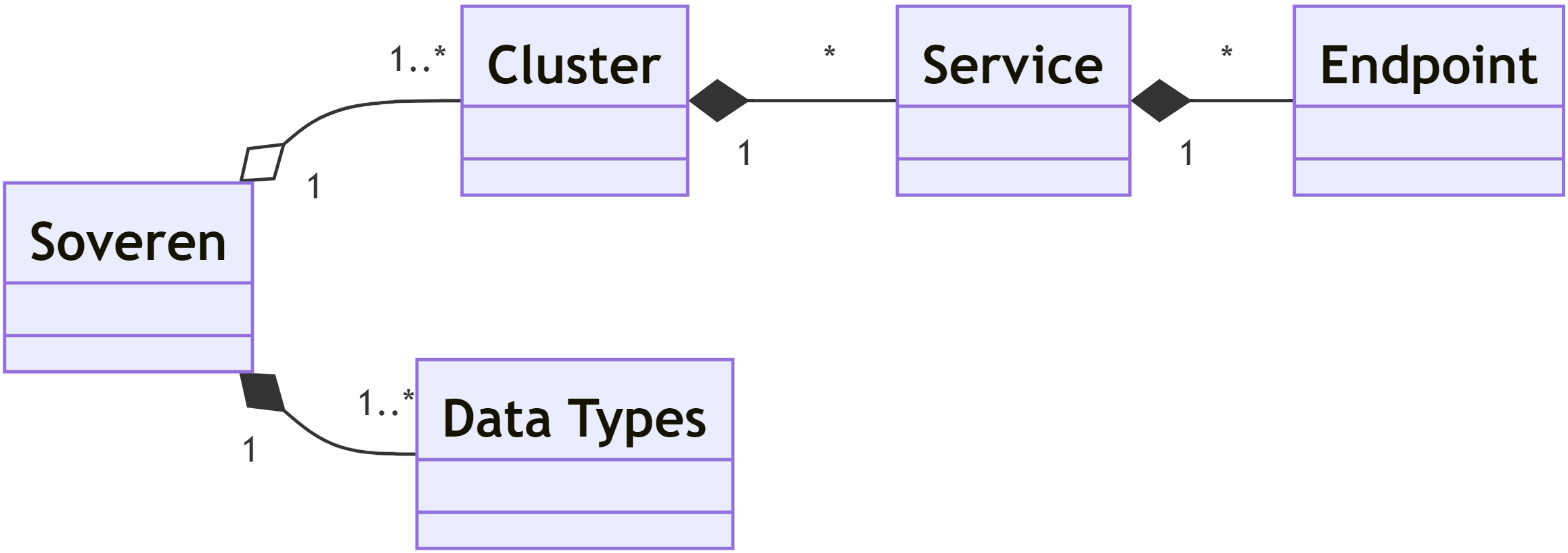Object API¶
Why use the API¶
Soveren provides the Object API to allow users to extract information about all discovered services, the flows between them, and the detected data types.
A popular use case for the Soveren Object API is to automatically keep your inventory updated and enriched with metadata such as live descriptions, service owners, and instances of actual activity (e.g., sending or receiving data). Additionally, you can track real-time data streams between services and pinpoint where sensitive data is detected.
Connecting to the API¶
To connect to the Object API, you will need an authentication token. Soveren uses bearer authentication.
To get the token, open the Integrations in the Soveren app, and press Manage on the API Tokens configuration there:
You will be prompted to create new token if you don't have any:
Upon pressing the button, you will need to provide a descriptive name for your new token:
After you've provided the name for the token and pressed Create, you will get the token value:
And the list of tokens will now be non-emtpy:
Now you are all set and can start using the Soveren Object API!
Using the API¶
Soveren Object API is accessible at https://api.soveren.io/.
Object model which is provided by the API is as follows.
Soveren represents your infrastructure in terms of Kubernetes clusters where you deploy Soveren Sensors. Each cluster is distinguished by its ID and the name you assign to it.
Services refer to deployments that Soveren identifies within the cluster. More precisely, they represent an aggregate based on either the source IP or destination IP from web service calls. Although there can be various types of services, currently, Soveren supports only one type, termed "Kubernetes workload."
An endpoint is a distinct combination of a hostname, method, and URL discovered on an service.
Communication channels between services, where sensitive data types have been detected, are termed data streams. For instance, when one service calls another, this establishes a data stream.
Multiple data streams can exist between two services. If two services share at least one data stream, Soveren determines that there's a data flow between them.
Between any two chosen services, there can be two data flows — one in each direction (from one service to the other and vice versa). A single data flow can encompass multiple data streams.
For a comprehensive description of each object structure available through the APIs, please refer to the Soveren Object API.
